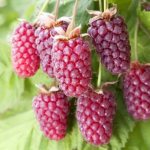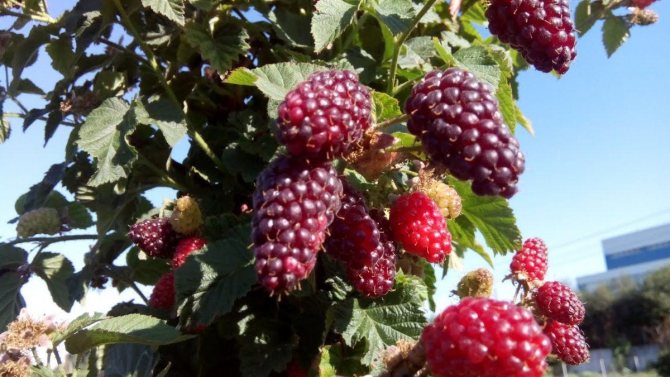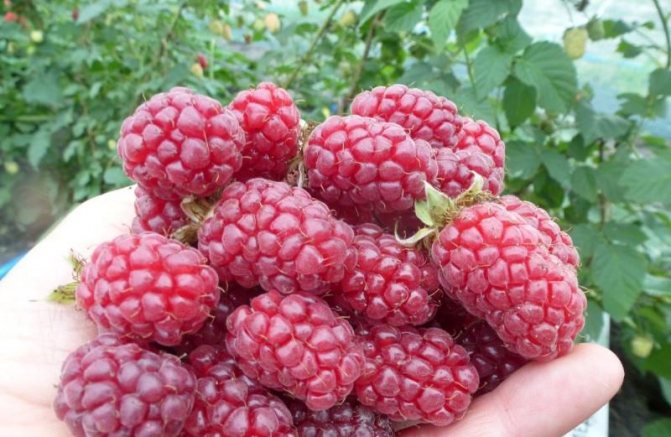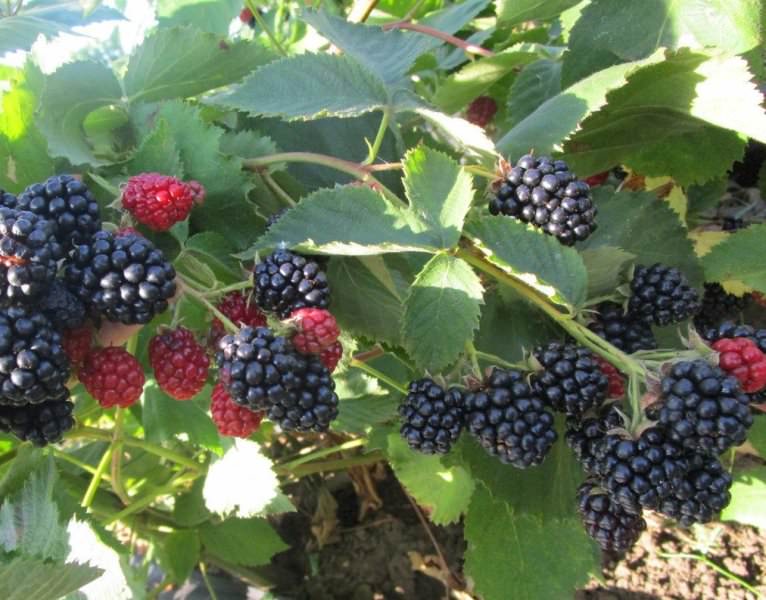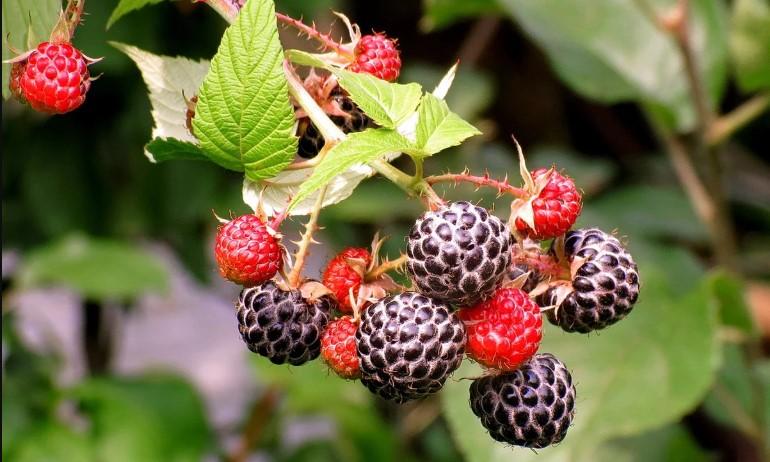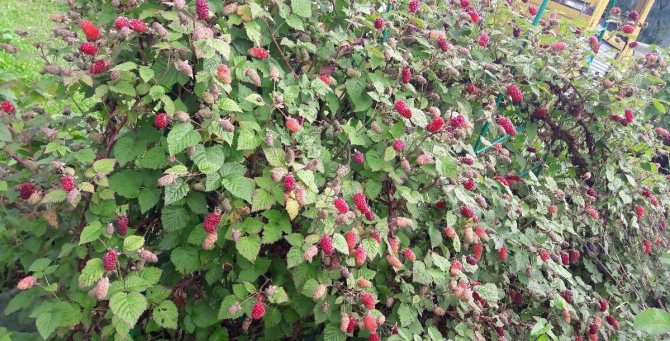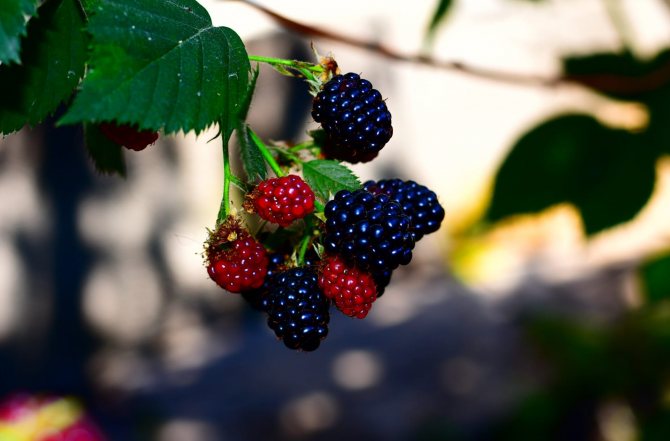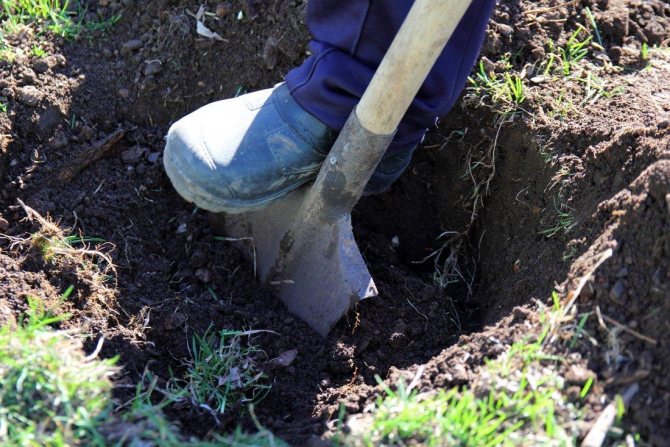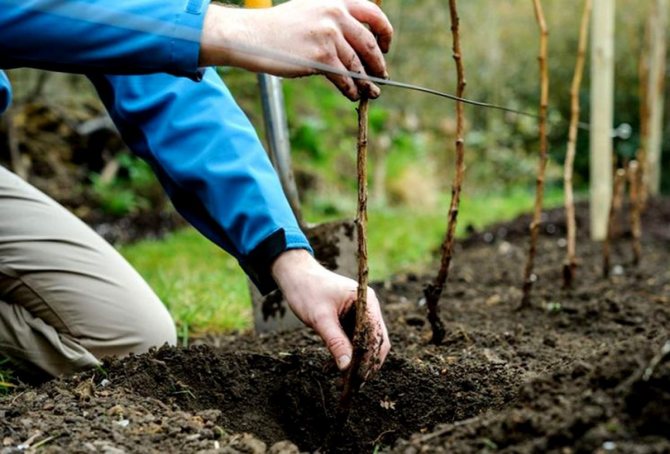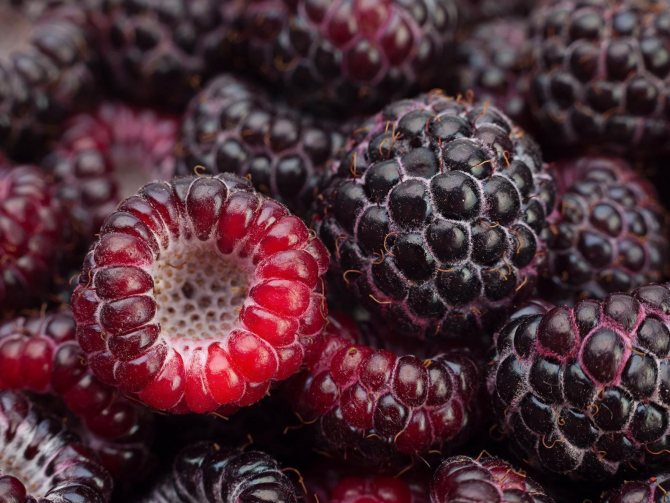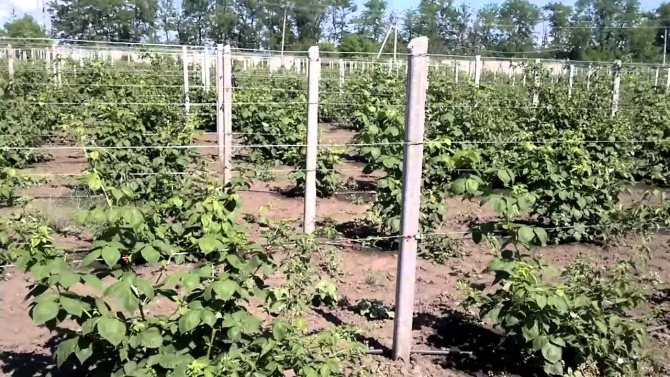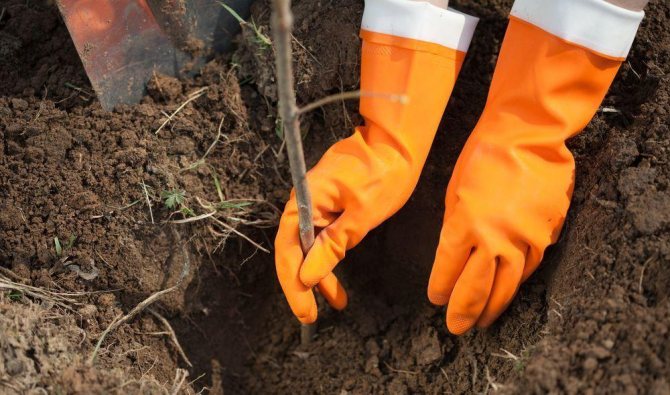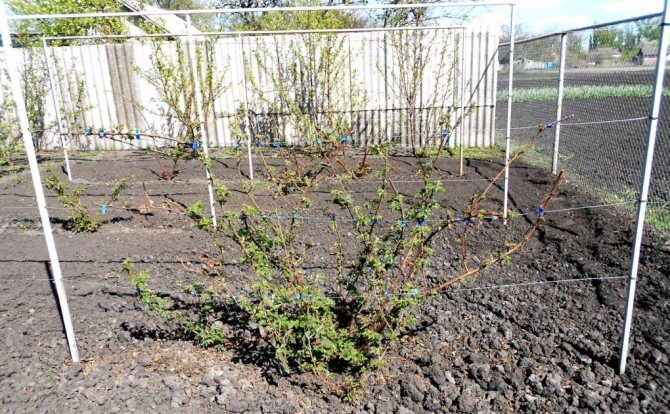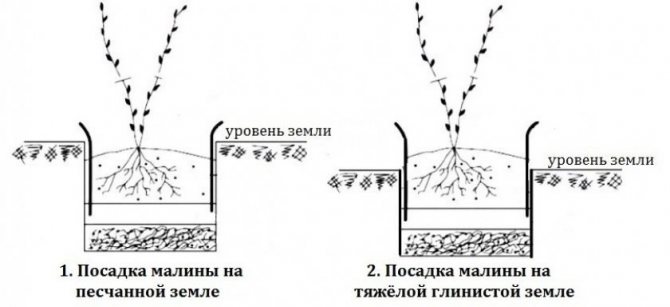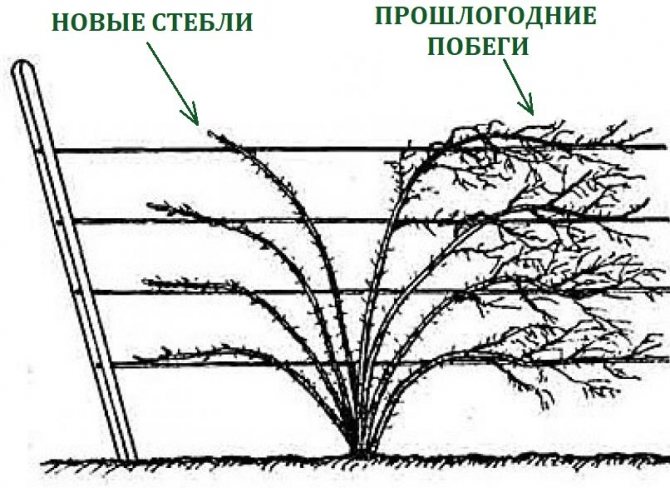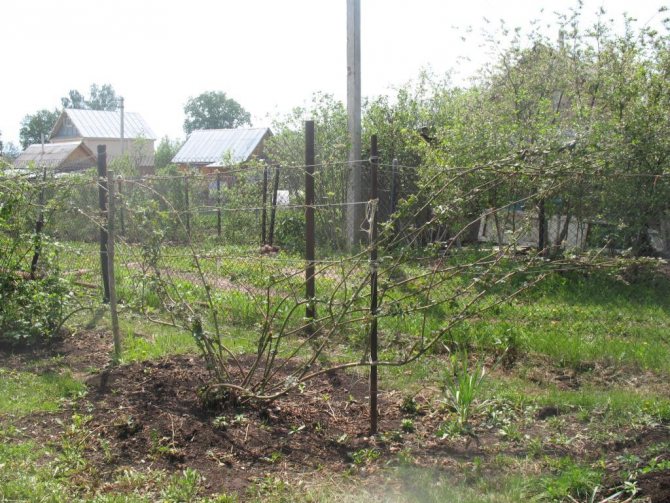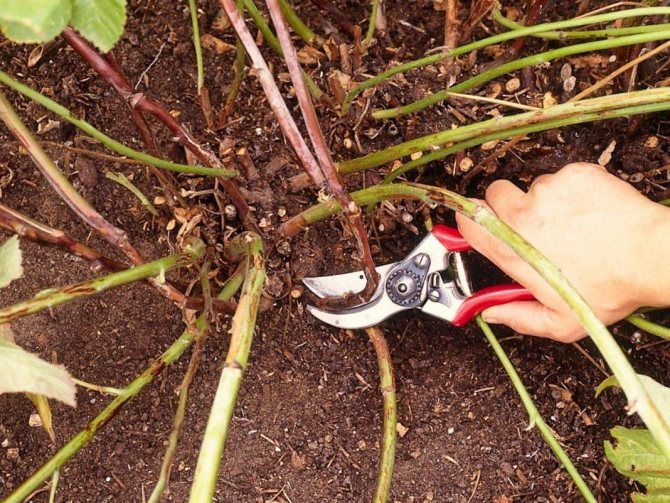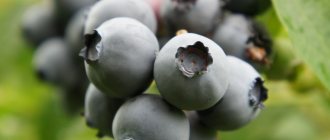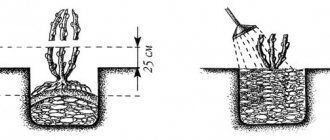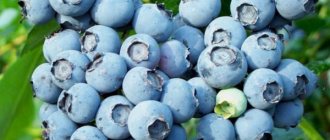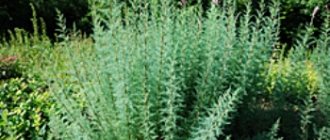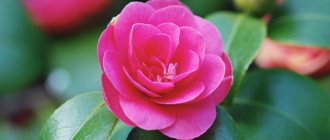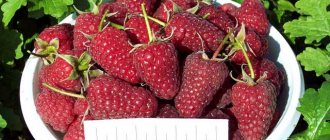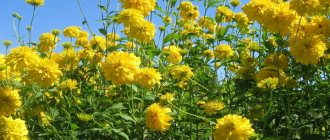09.05.2016
- Varieties
- Tiberi
- Loganberry
- Boysenberry
- Texas
- Darrow
- Landing
- Care
- Reproduction
- Pests and diseases
Ezhemalina is a hybrid of raspberries and blackberries. It is often called the word "tiberi", but this is not entirely true. Taybury is the most popular variety of Jemalina.
This is a relatively new berry culture for Russia, although in fact the first hybrids of blackberries and raspberries appeared in the United States in the 19th century, and in Russia in the 1930s. They were bred to increase drought resistance, winter hardiness and productivity of raspberries, while maintaining its great taste. Such productive, unpretentious and tasty hybrids did not appear immediately: breeders of the past often failed. However, one hundred and thirty years is a long time: today there are excellent varieties of Ezhemalina, the seedlings of which can be bought in Russia.
Ezemalina Loganberry variety
Loganberry with tall bushes, about 2 m, is one of the most popular varieties of Yazhmalina. It appeared by accident. It was just that two bushes grew together in a California garden, which was owned by a judge.
They pollinated from each other and became the first hybrid blackberry-raspberry plants. Scientists found out about this, used it and began to experiment to create a new berry culture.
Loganberry has dark foliage and elongated sweet and sour berries (6 g). Moreover, each bushes with a whole range of colors. But with thorns. There are also pale pink and bluish red and dark purple with a blush.
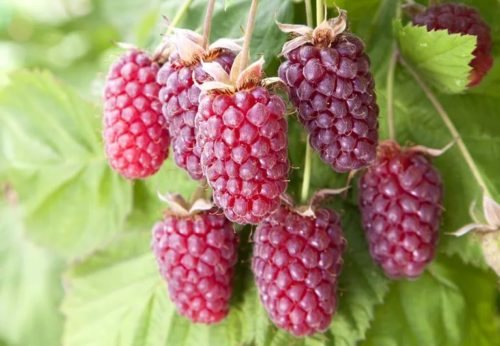
Plants:
- with good productivity;
- persistent immunity against diseases and pests;
- good frost resistance.
Flowering from mid-June to mid-August. The first harvests are in August and before the early frosts. Culture loves light and garter. One bush gives about 10 kg. They are well transported and stored for up to 5 days. Mostly they are eaten fresh due to their uneven ripening.
Differences between black raspberries and blackberries
The main differences are:
- the appearance of the fruit;
- removal of the receptacle with the berry;
- growth opportunities of shoots.
The black raspberry shrub reaches a height of 2-3 m. It has medium thorny shoots and feathery leaves, consisting of 5 leaves. The fruit is a drupe with a diameter of 15 mm, which has a sweet and sour taste, contains a large amount of anthocyanins and ellagic acid.
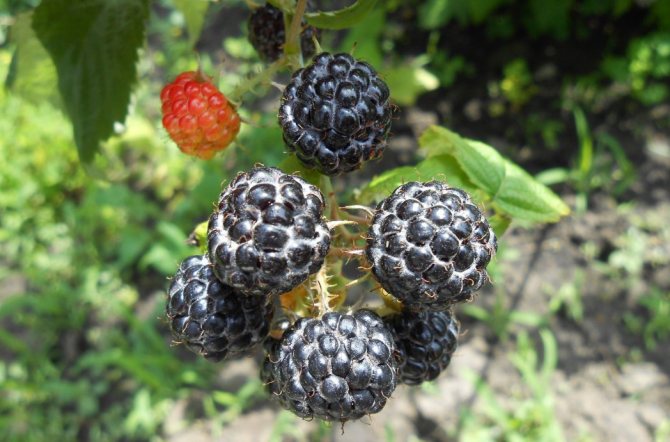

The difference between the black-fruited shrub and the red raspberry is that its branches are more prickly, and the berries are denser and more difficult to separate from the receptacle. Thanks to this, the crop does not crumble after ripening.
Raspberries are smaller than blackberries. The hairs are more pronounced on them. They are used in folk medicine much more widely than blackberries. It is also worth noting that raspberries and their effects on the body have been studied much better.
The health benefits of berries are mainly due to the high content of antioxidants and anthocyanins. The fruits of black raspberries are usually dried or frozen, mashed and juiced, and also used to obtain dyes.
Read more about the main differences between black raspberries and blackberries.
Blackberries are also a shrub. Its branches can be in a standing position or bend and weave along the ground. They take root on contact with soil. The height, or rather the length of the braiding stems, can exceed 6 m.
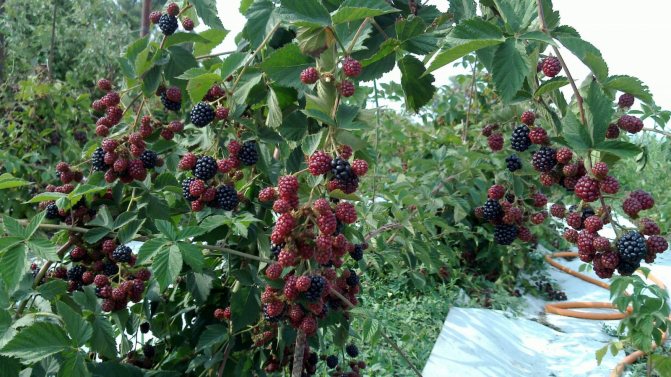

Unlike raspberries, blackberries are removed along with the fruit. Blackberries are black, covered with a bluish bloom. Their drupes are much larger than those of raspberries. Their taste is sweet and sour, but more intense and slightly tart. The possibilities of using in cooking are the same.
Tayberry
Also a raspberry variety, but Scottish. We crossed the blackberry Aurora and raspberry.
A crop with studded bushes up to 2 meters.
Deep red berries, large, sweet, raspberry, weighing 5 - 12 g.
From one bush collect from 4 to 5 kg.
The first wave of the Tayberry harvest appears in early July, and you can feast on this berry until August.
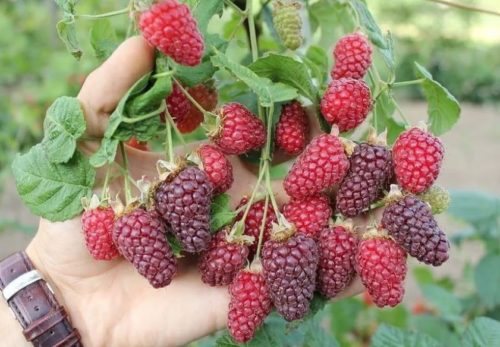

It turns out about 5 harvests per season.
It tolerates diseases and pests persistently.
It tolerates cold, but it is better to cover.
Doesn't like drafts. It develops well in sunny areas.
Healing properties of the hybrid
A hybrid of blackberries and raspberries surprisingly combines the benefits of both plants. The berries include:
- vitamins (B, C, K, E);
- minerals (iron, phosphorus, magnesium);
- malic and citric acids.
The fruits are recommended for use in food to increase resistance to diseases, joint problems, gastrointestinal tract and liver pathologies.
Note! It is believed that the fruits of ezemalina are a natural remedy for the prevention of cancer.
Their use will have to be abandoned in case of individual intolerance, gout, serious kidney disease.
Ezemalina Texas variety
A crop with creeping bushes up to 5 meters and a height of about 2 meters. Fruits are sweet and sour, red, oblong in shape, weighing about 12 g. When ripe, the color changes to dark crimson.
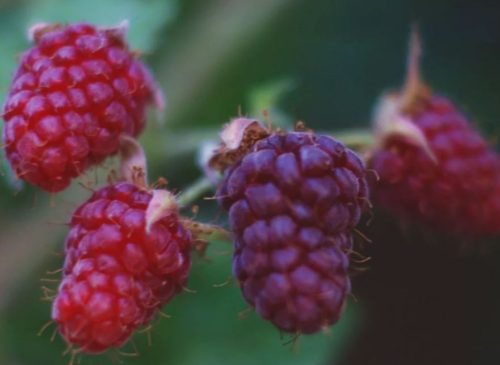

Spiked plants are grown in the middle Russian regions. You can remove from 5 to 8 kg of harvest from one bush. But the berries are inconvenient to pick because of the poorly separating stalks.
Plants grow in sunny areas, sheltered from drafts, on light soil. Show resistance to severe frosts.
More on the subject: Yellow Raspberry Yellow Giant
Preparing for winter
The Tayberry variety has an average frost resistance, so gardeners, when preparing it for winter, recommend the following:
- at the end of the growing season, before wintering, watering is completely stopped;
- the branches removed from the trellis are tied into bundles and fixed to the ground with staples;
- in regions with snowy winters, the snow cover acts as a shelter, so the bushes do not need to be covered;
- in areas where there are severe frosts, it is better to remove the shrub from the trellis and cover it with spunbond or other suitable material, or simply sprinkle it with earth. Do not cover strongly, so as not to cause rotting and damping of plants;
- if the winters are not too cold, you can prune the shoots. In regions with severe frosts, it is not recommended to cut off branches in autumn and remove sprouted shoots;
- Some gardeners practice shelter with straw, fallen leaves or burlap, but such materials can provide shelter for rodents, whose presence can be detrimental to plants.
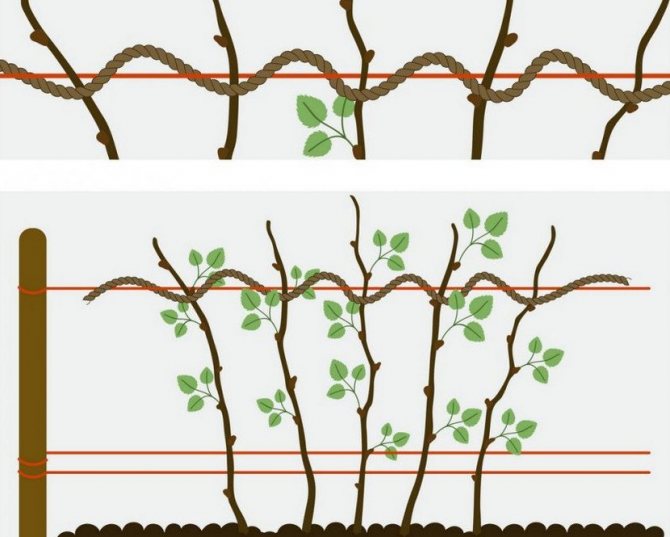

When the spring temperature reaches + 10 ° C, the shelters are removed and the shoots are lifted onto the trellises.
Boysenberry
Interesting varieties of ezhemalina with bushes up to 3 meters and with strong, long shoots. They have small thorns. Culture with 5 cm cherry berries, weighing up to 10 g. When fully ripe, they become black-purple. The foliage is light green.
One bush gives about 76 kg. Therefore, the bushes need trellises. Also does not like drafts. Grows in the sun. Harvests begin from the 2nd half of June to August. Fruiting begins the next year after planting.
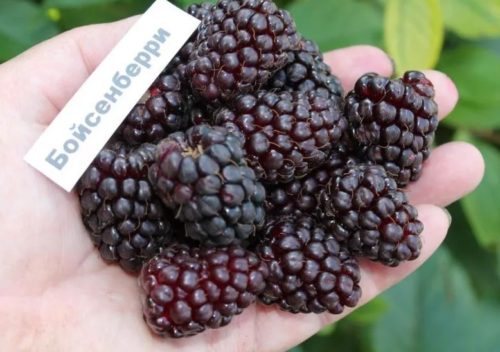

Good immunity to harmful organisms. With medium frost resistance.Plants are used for cosmetics. They are also used for the preparation of various desserts. And also just pour milk and eat.
Gardeners reviews
Gray beetle, Vladikavkaz
The original Loganberry raspberry (my 2 bushes dried up at the age of five for a reason unknown to me) was not rich in taste, the new Tayberry is raspberry sweet with a hint of blackberries, the ripe berry hangs for a long time, the vines can be bent to the ground.
Ezhemalins are more sensitive to both frost and pest diseases. Tayberry is prickly, and the clone of Loganberry has yet to be found. The yield is poor and the taste is not impressive.
Ezemalina Darrow variety
Vigorous shrubs with erect stems up to 3 m. Trellis are necessary for them. Adult bushes give about 10 kg from each.
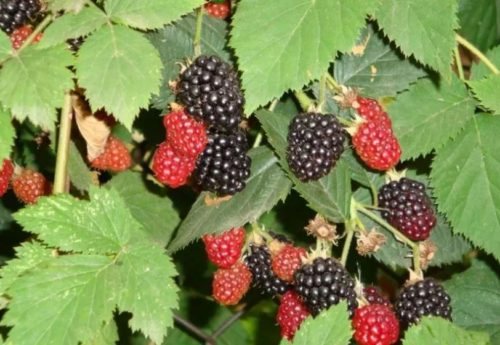

Scarlet, at the time of ripening, when elongated sweet and sour berries ripen, weighing up to 10 g, acquire a purple hue. They grow in the sun without drafts. Crop is harvested from the second half to September.
We grow and care for ezemalina
Landing
Important! Raspberries are arranged in sunny areas without drafts. On loose, moisture-consuming soils. We must not forget that the culture will tolerate drought, but may die from excess moisture.
You can plant both in spring and autumn. But it must be remembered that in the north and in the Moscow region, plants will not be able to take root until the onset of frost. Usually gardeners of the southern latitudes are engaged in planting in autumn. It is possible in the summer, only on the roots of the bushes there should be more soil.
But in the autumn season, it is necessary to keep within those days, until the first frosts come, for the plants to take root in a new place. In the spring, still half-asleep bushes are planted. Planting must be carried out carefully, to the maximum preserved earthen lumps on the processes.
If the roots are open, they should be healthy and strong. With vegetative buds, the bushes are planted carefully so that they are not damaged. Experts recommend a row planting method. With a distance between bushes up to 1 m. Row spacing - from 1.5 to 2 m.
More on the topic: Large-fruited Rubifol raspberry
The dimensions of the pits should be 40x40x40 cm. The seats are prepared several weeks before planting. The excavated soil and humus or compost are mixed together.
Important! It is undesirable to use chicken manure or other organic matter instead of humus. Because it gives the growth power to plants, but at the same time frost resistance is lost in crops. This has a bad effect on the shoots, and they take root with difficulty.
After the preparatory work, planting begins.
When landing:
- It is necessary to arrange the plants in the center of the pit.
- Distribute roots.
- Cover with prepared soil with humus or compost.
- Tamp the ground.
- Drizzle. For irrigation, they use warm, settled water with a few drops of extra elina.
Then make mulch from mullein, sawdust, ash, weeds.
Watering
Ezemalina varieties do not require a lot of water. Watering is necessary when planting and after 14 days after the shoots take root. Plants will need a lot of water when the fruits form and ripen.
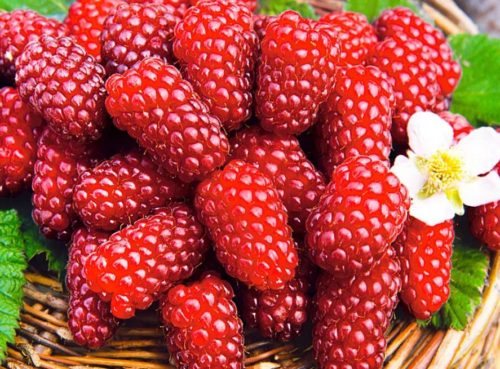

In dry climates, the crop will ask for additional moisture. If the summer is rainy, then there will be enough moisture for the plants. To reduce watering to a minimum, you can use mulching around the bushes with straw, peat or grass cuttings. In the raspberry plant, you need to monitor its cleanliness and weed weeds for good yields.
Care
The blackberry-raspberry hybrid is easy to care for, but requires the right approach:
- Watering should be infrequent, but abundant. Depending on the weather, about once every 10 days. Plants especially need moisture during the period of active growth of the green mass, during the formation of the ovary and during dry periods. Drought negatively affects productivity, and waterlogging affects the sweetness of the fruit (they become sour).
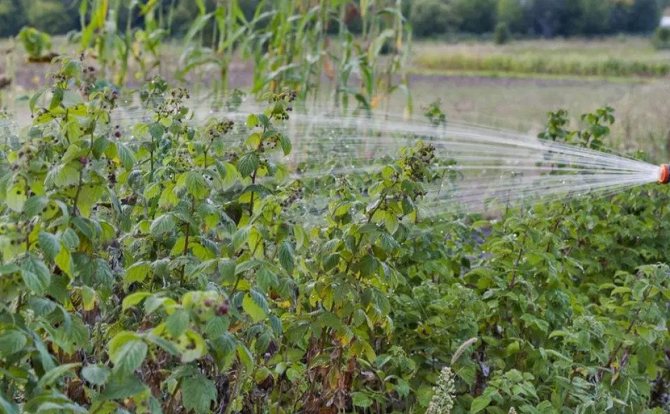

- Excessive feeding is not required, especially care should be taken to use nitrogen. It is enough to carry out seasonal application for each bush about 20 g of nitrophoska or 1 tbsp. ash. Such dressings are carried out during the flowering period. A mulch layer that gradually turns into fertilizer is a good option.
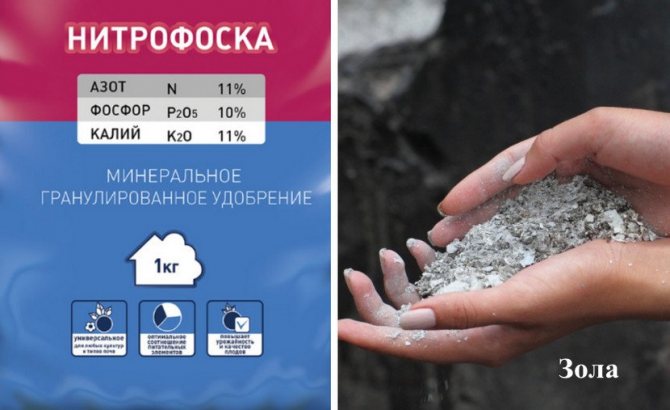

- Mulching soil around bushes, you can not only get good fertilization, but also prevent moisture evaporation and weed growth. The thickness of the mulch layer should be about 10 cm. 4-5 kg of peat, grass cuttings or rotted sawdust applied under each bush will satisfy the needs of the plant.
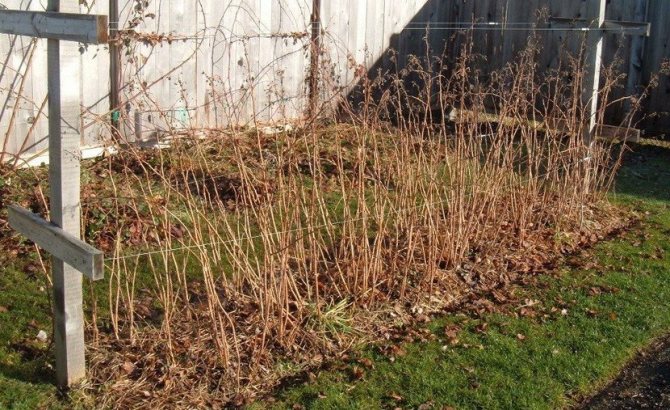

- Pruning is an important care item., on which the yield largely depends. In the spring, dry, frozen and damaged stems are cut, after which the remaining branches are tied to a trellis. When a two-meter height is reached, pinching of the tops is carried out, which ensures the growth of lateral stems of the second order (the main crop is formed on them). After harvesting the fruits, remove the old branches, making room for young shoots. With this pruning, you need to leave about 4 strong shoots, which can be shortened by 20 cm in the spring before tying them onto a trellis, which will have a positive effect on the size of the berries and the yield.
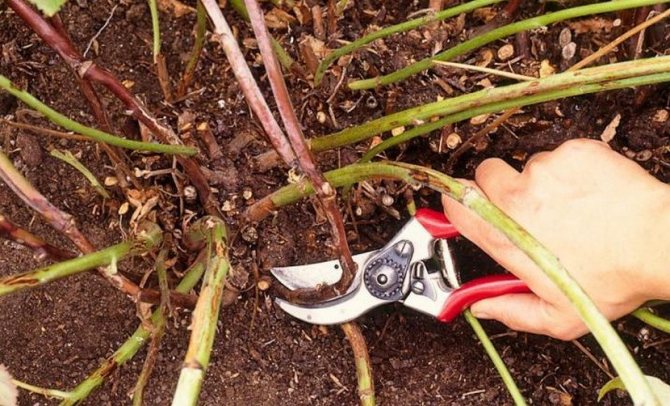

- Tying the branches of the trellis to the trellis provides not only good lighting of the bushes, cleanliness of the crop, reduction of diseases, but also simplifies maintenance. Basically, the use of a single-sheet trellis with 4-5 rows of wire (or thick fishing line) is practiced, but you can limit yourself to 2 rows. The first row is stretched at a height of about a meter, and the second is slightly higher (1.5-2 meters). Fruiting branches are tied to the upper wire, and young ones to the lower one. It is more convenient to tie it up in a fan-like manner or in the shape of a bowl, so that the whole plant is evenly illuminated.
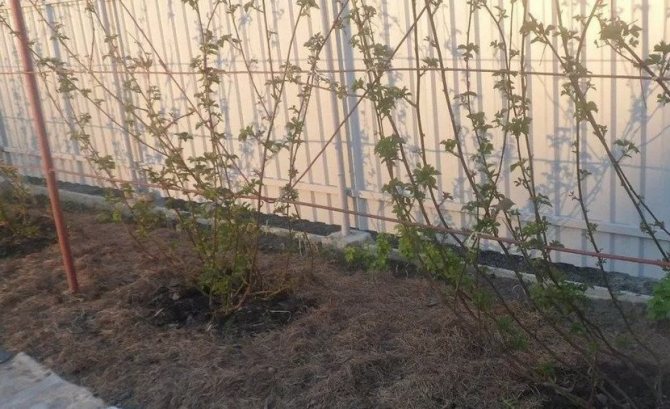

- Before wintering spend bush shelter.
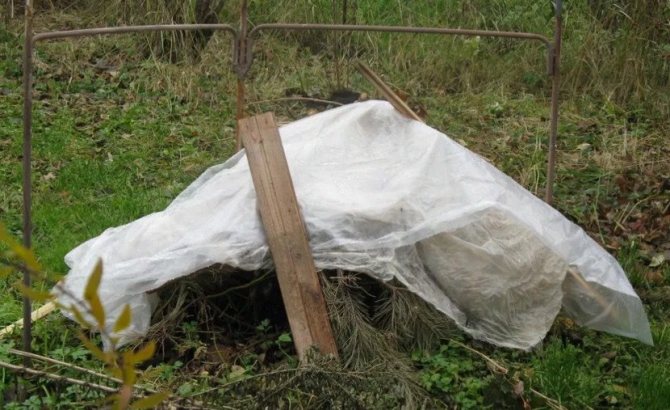

Some gardeners oppose pinching the tops and shortening the shoots, arguing that the bush has good branching, but the growth of shoots is limited, which reduces the number of fruits.
How to propagate varieties of ezhemalina
Ezemalina varieties can be bred with green cuttings. Branches are harvested in August. Shoots are cut from the tops of 20 to 40 cm and immediately planted to a depth of 20 cm. Already next year, one such shoot will give 4 plants.
Harvesting lignified cuttings is carried out in the fall. Twigs with 2 buds and with a length of about 20 cm are cut off. They are sent into the water, and they are there for 24 hours. Then they are planted in the ground 20 cm deep with a distance of 5 to 10 cm. There should be no more than 2 buds on the ground. If more buds have appeared, they need to be sprinkled with soil.
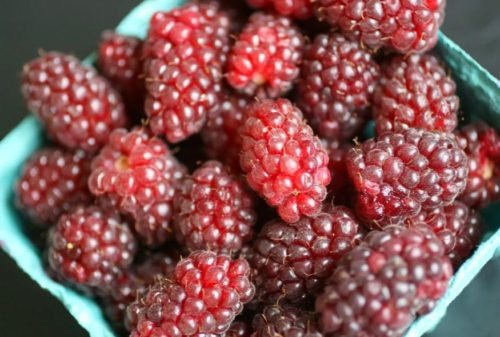

Propagated by root cuttings in the spring. The shoots are dug up and the rhizomes are divided into parts. Then they are planted to a depth of 20 cm.
Such grafting contributes to the emergence of well-developed seedlings after 12 months, with all the maternal characteristics.
Fight against diseases and microorganisms
Jemalina varieties can attack the same diseases as raspberries. They can get sick:
- rust;
- powdery mildew;
- verticillary wilting.
Important! Fight disease with fungicides. However, it should be remembered that you need to finish the treatment 20 days before the crop appears.
To prevent weevils, gall midges, and raspberry beetles from infecting plants, proceed as follows:
Do not thicken plantings.
Mulch the soil.
Follow strictly the rules of agricultural technology.
Reproduction
With the help of root suckers, this culture cannot be propagated, therefore, the reproduction of ezhemalina occurs:
- by rooting the tops;
- cuttings;
- seeds.
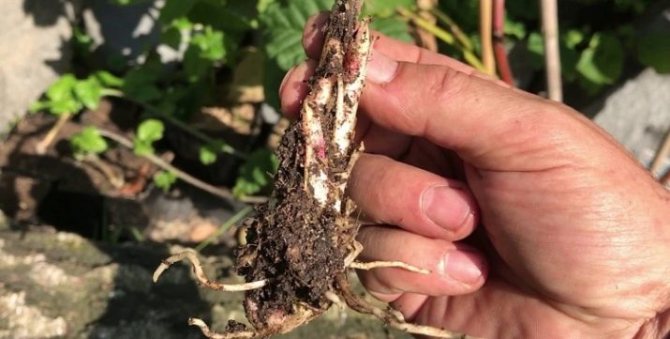

Seed propagation is a rather laborious process that requires special skill. It is much easier to propagate the Logan Berry by rooting the tops of an annual shoot or by rooting green cuttings.
In the fall, you should prepare pits for seedlings. Pits 40 * 50 cm in size are filled with manure with ash.Superphosphate, wood ash, dolomite flour, peat and sand are also added there. After mixing, the mixture is poured with water and left until spring. In May, seedlings should be transplanted into prepared places.
Output
Berries, leaves, branches of raspberry, like other raspberry plants, are useful for their anti-inflammatory and antipyretic effects.
They also have a positive effect on the kidneys, joints of the central nervous system, gastrointestinal tract. With problems: gastritis, ulcers, high acidity, kidneys, etc., it is better to refrain from plants.
Although a hybrid of raspberries and blackberries is not a very popular crop, the varieties of the raspberry are unpretentious, high-yielding. And therefore, it can be grown for the benefit and variety of the table with different desserts.
Choosing a landing site
Despite the fact that the Taybury ezhemalina, whose photo allows you to appreciate all its advantages, is quite unpretentious, you still need to pay special attention to certain nuances when choosing a place for landing. The plot should be sufficiently sunny, well lit and only slightly shaded. It is desirable that there is additional protection from the cold wind.
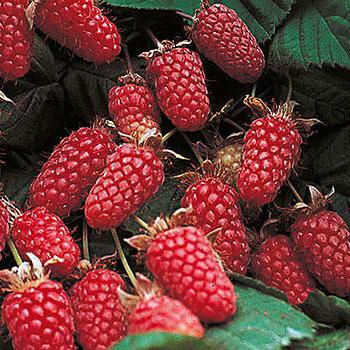

There should be no stagnation of moisture in the soil. Ezhemalina prefers fertile soils with good aeration.

